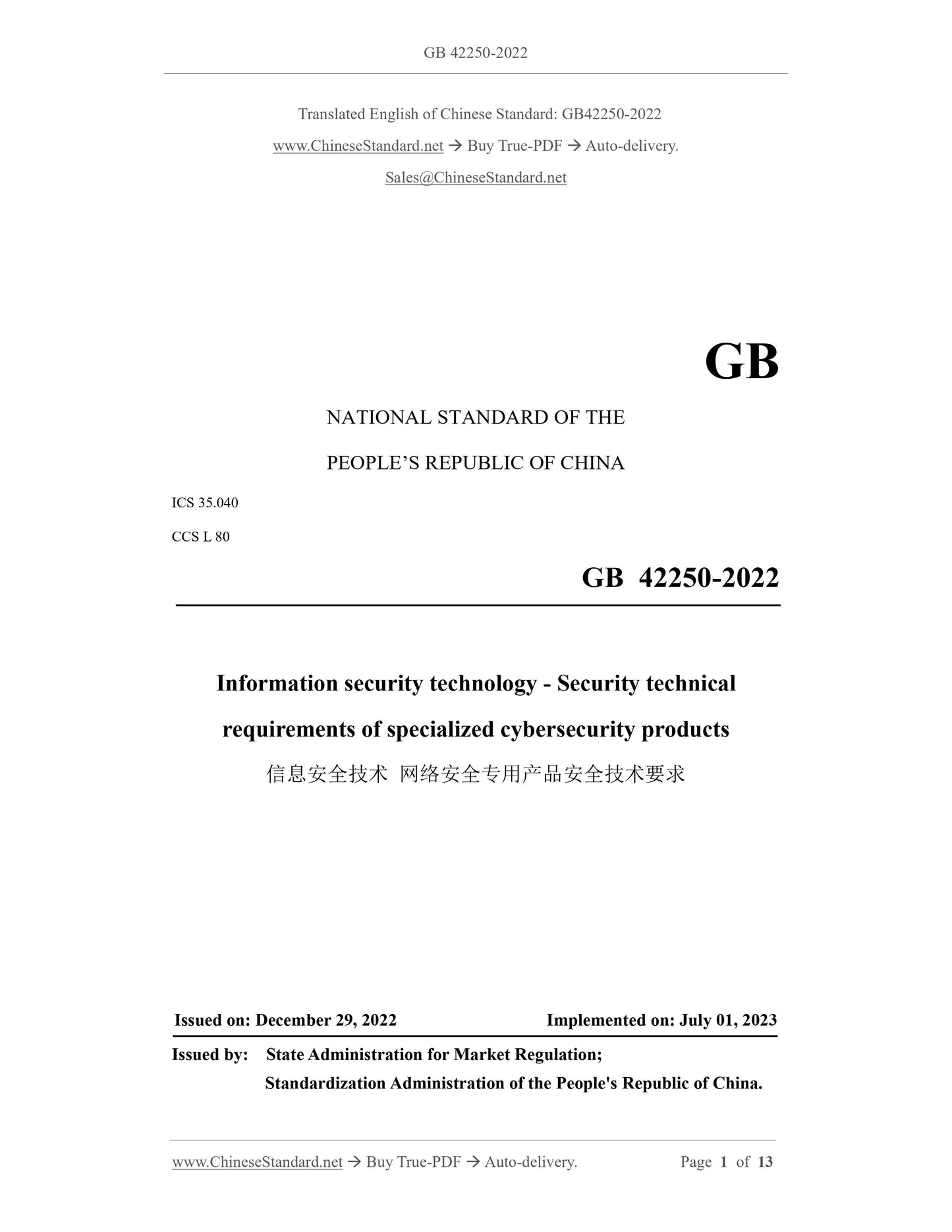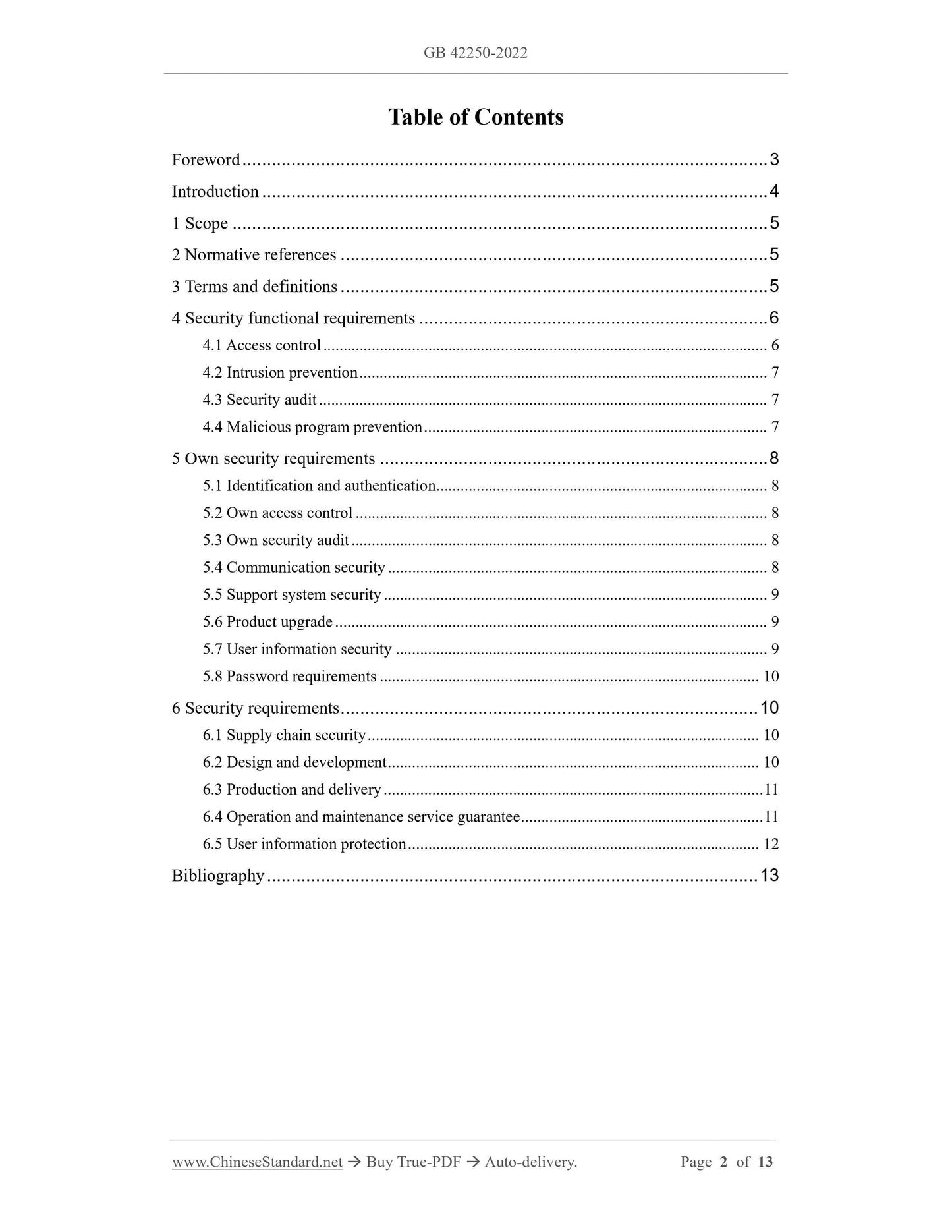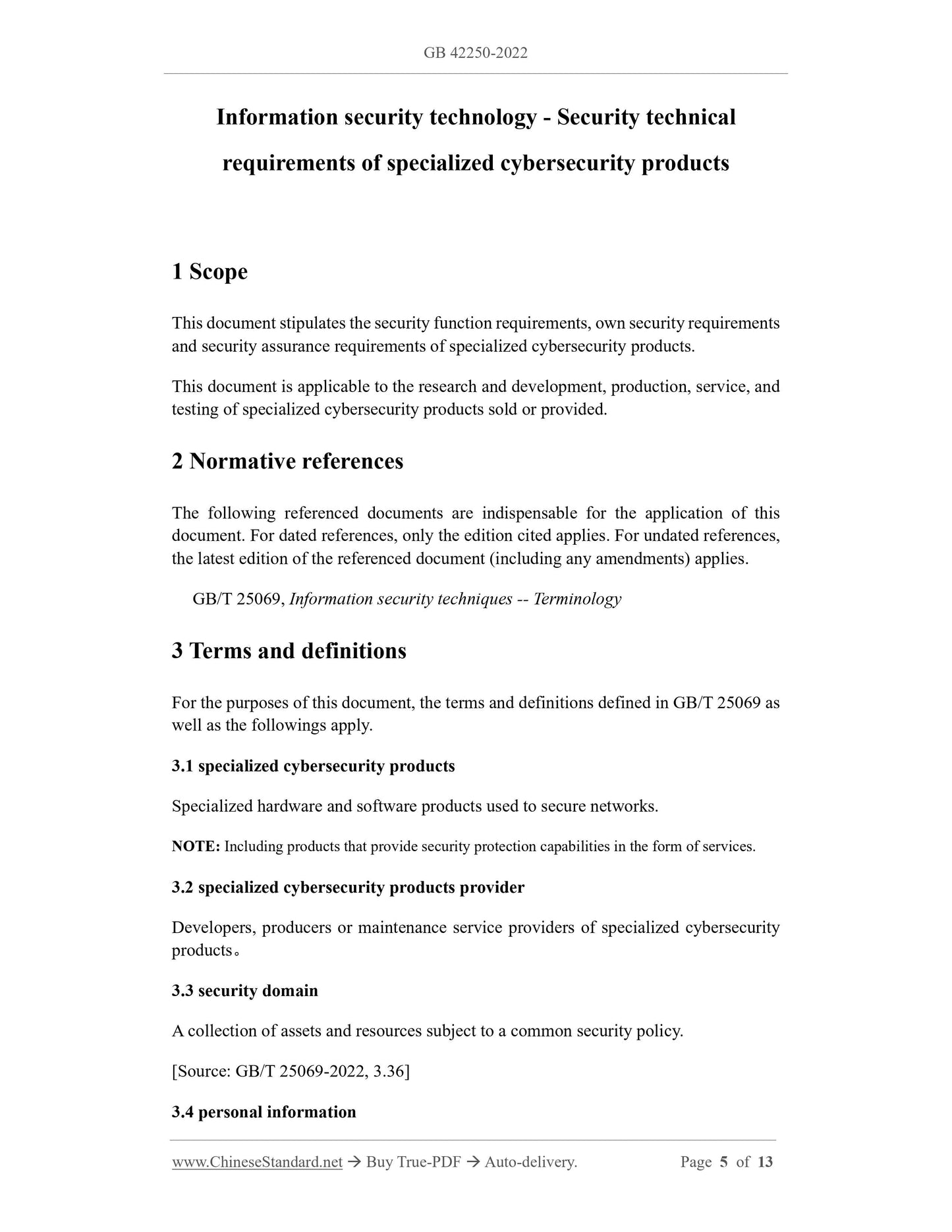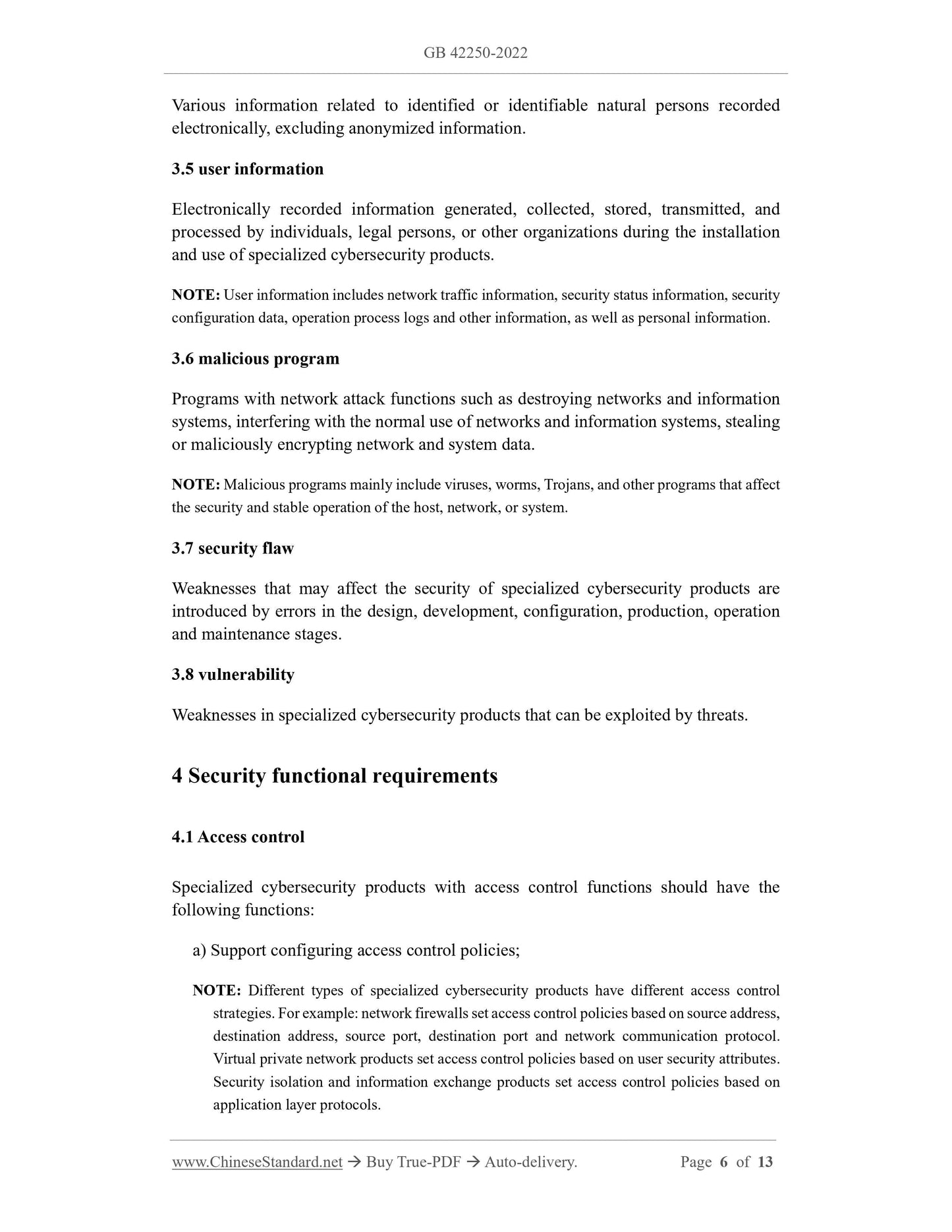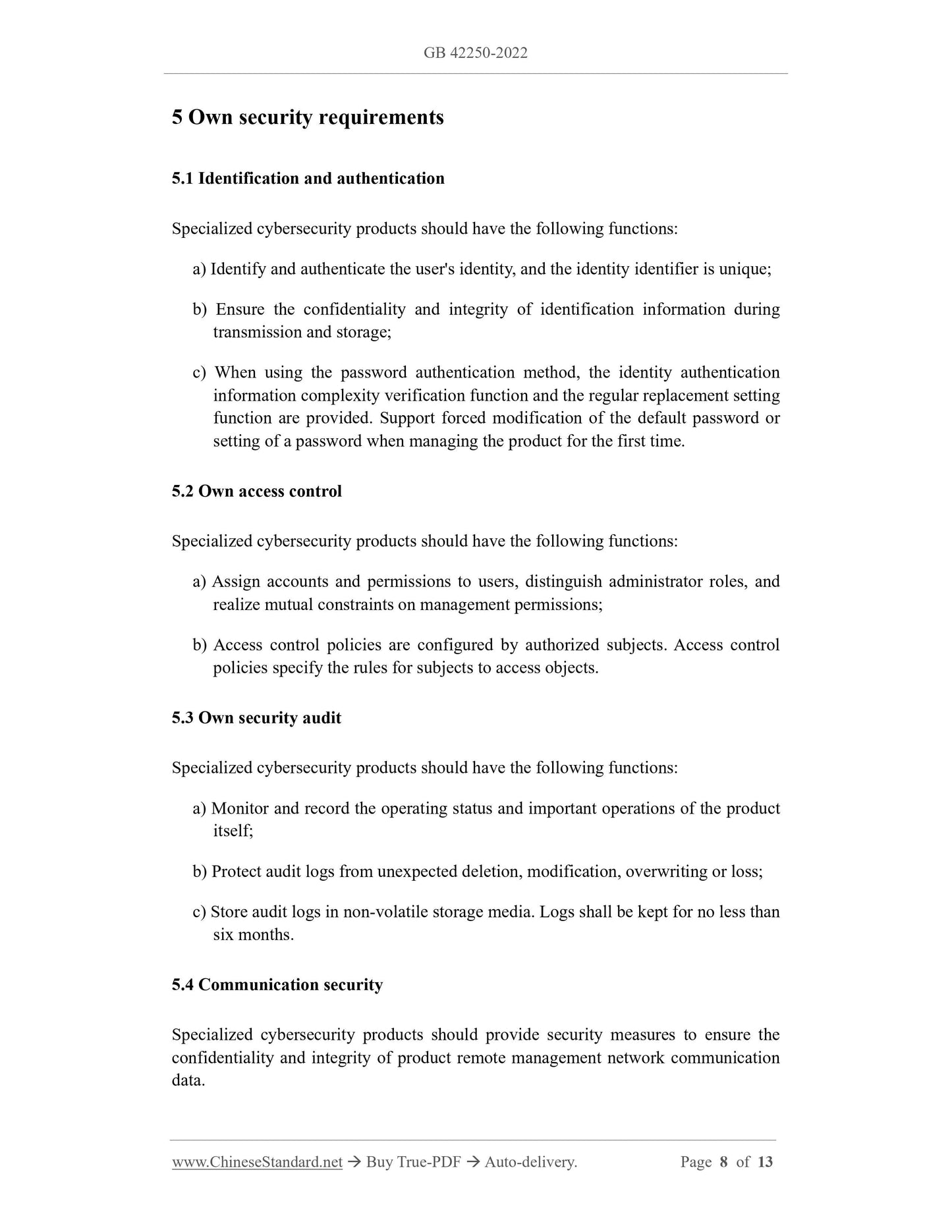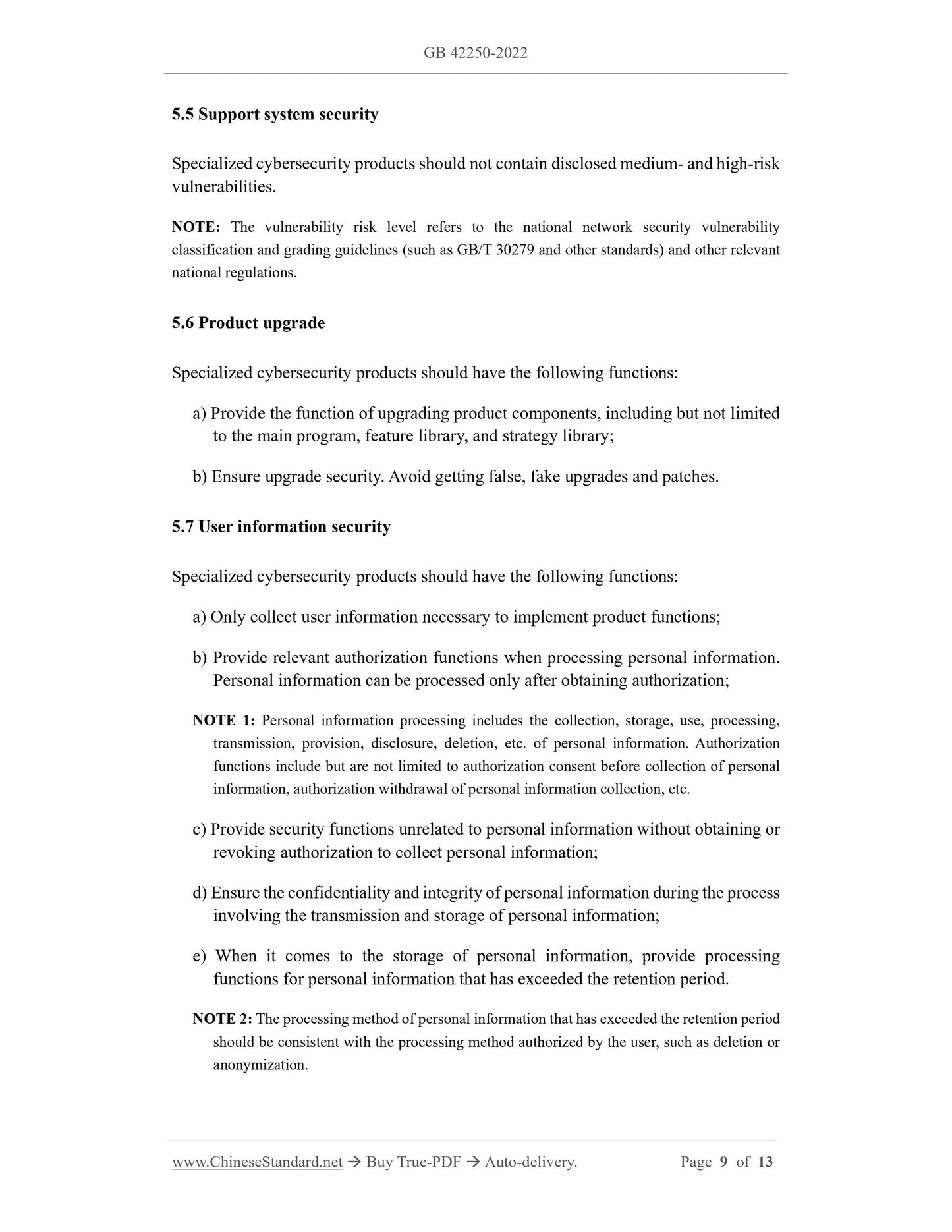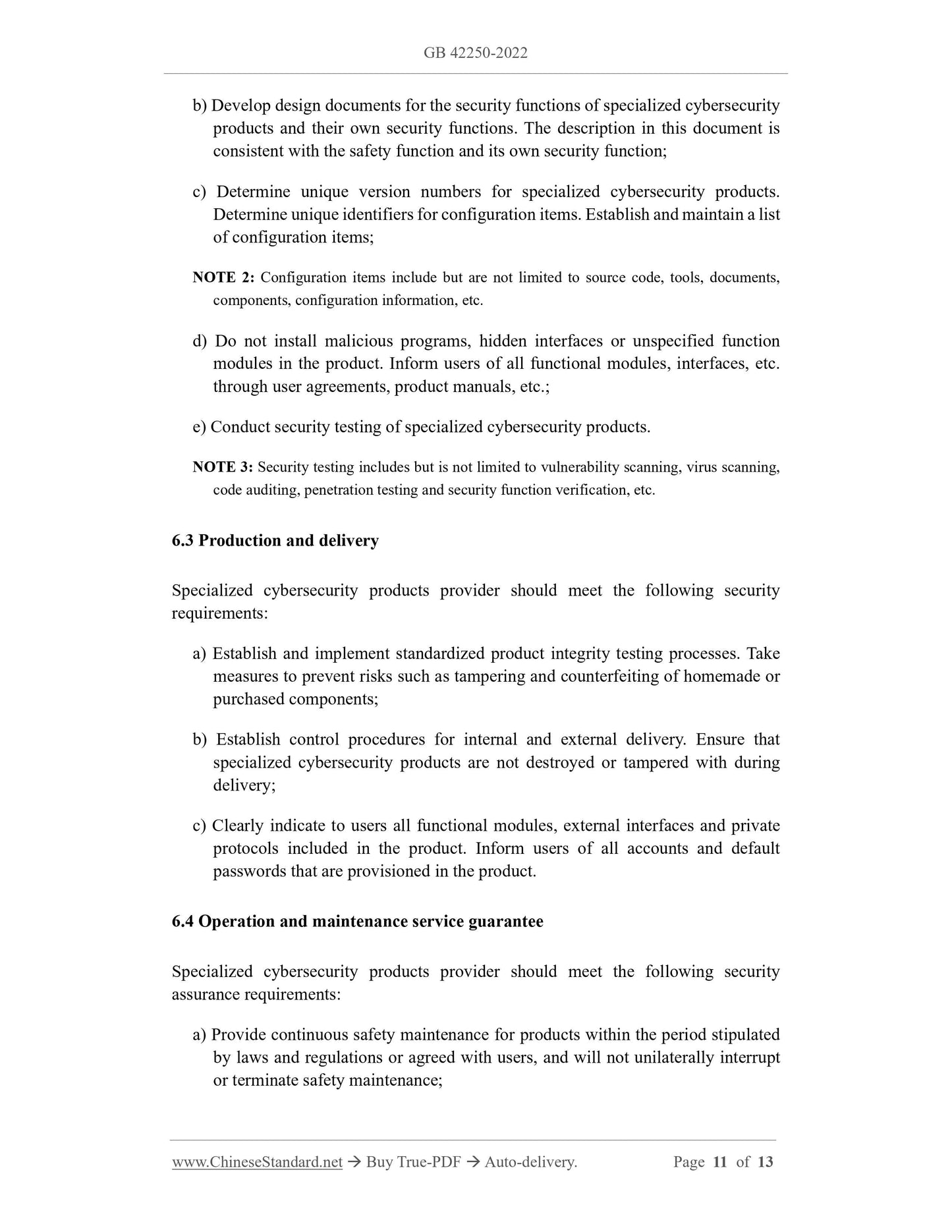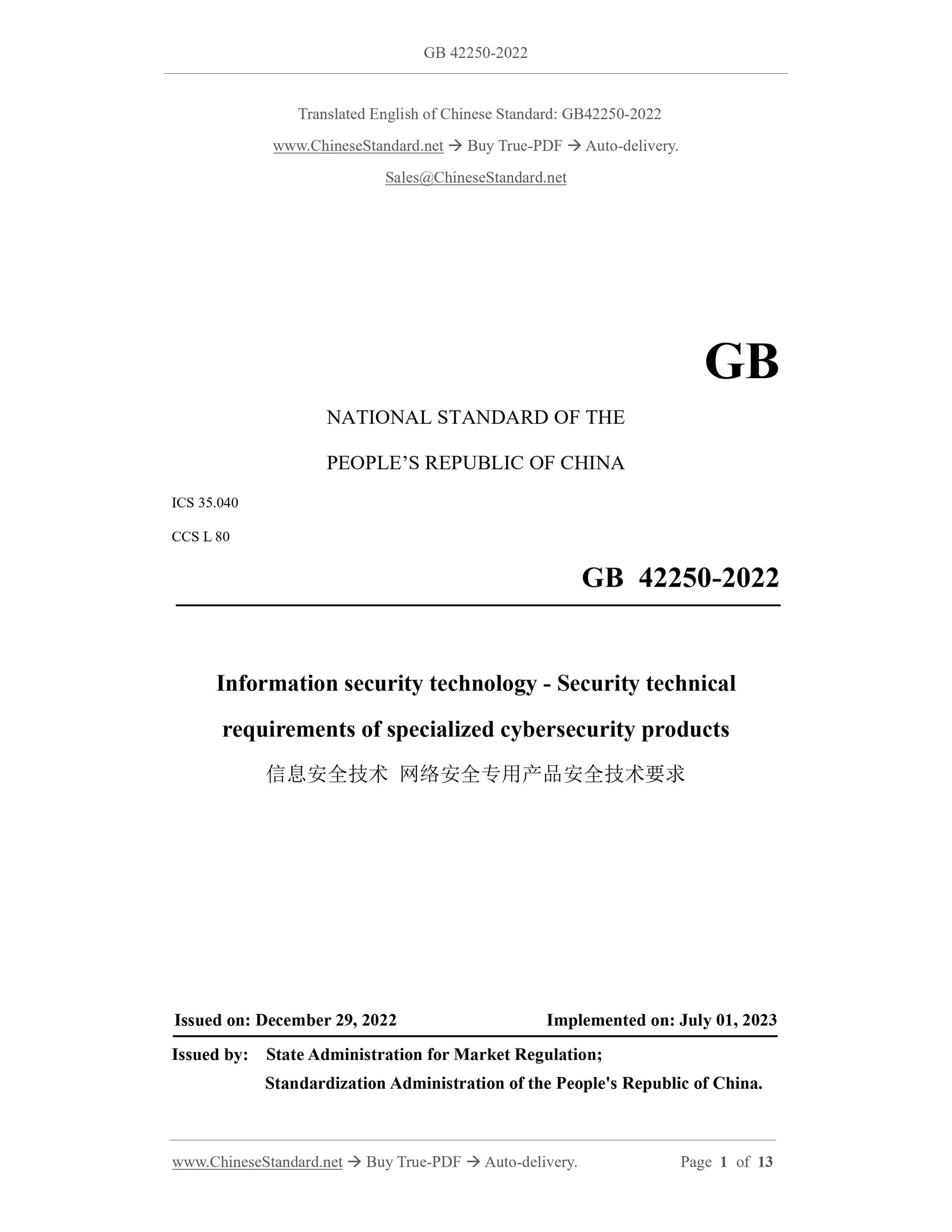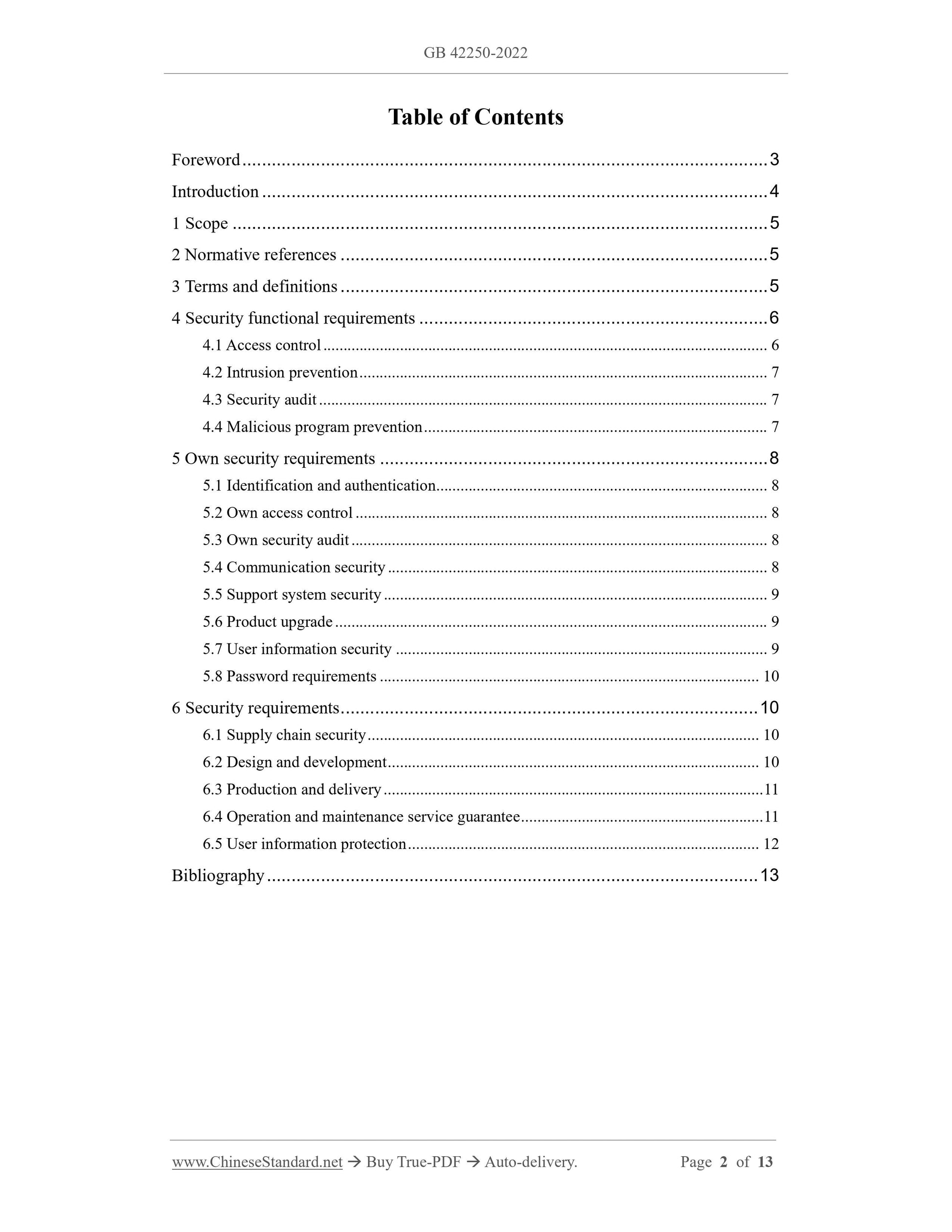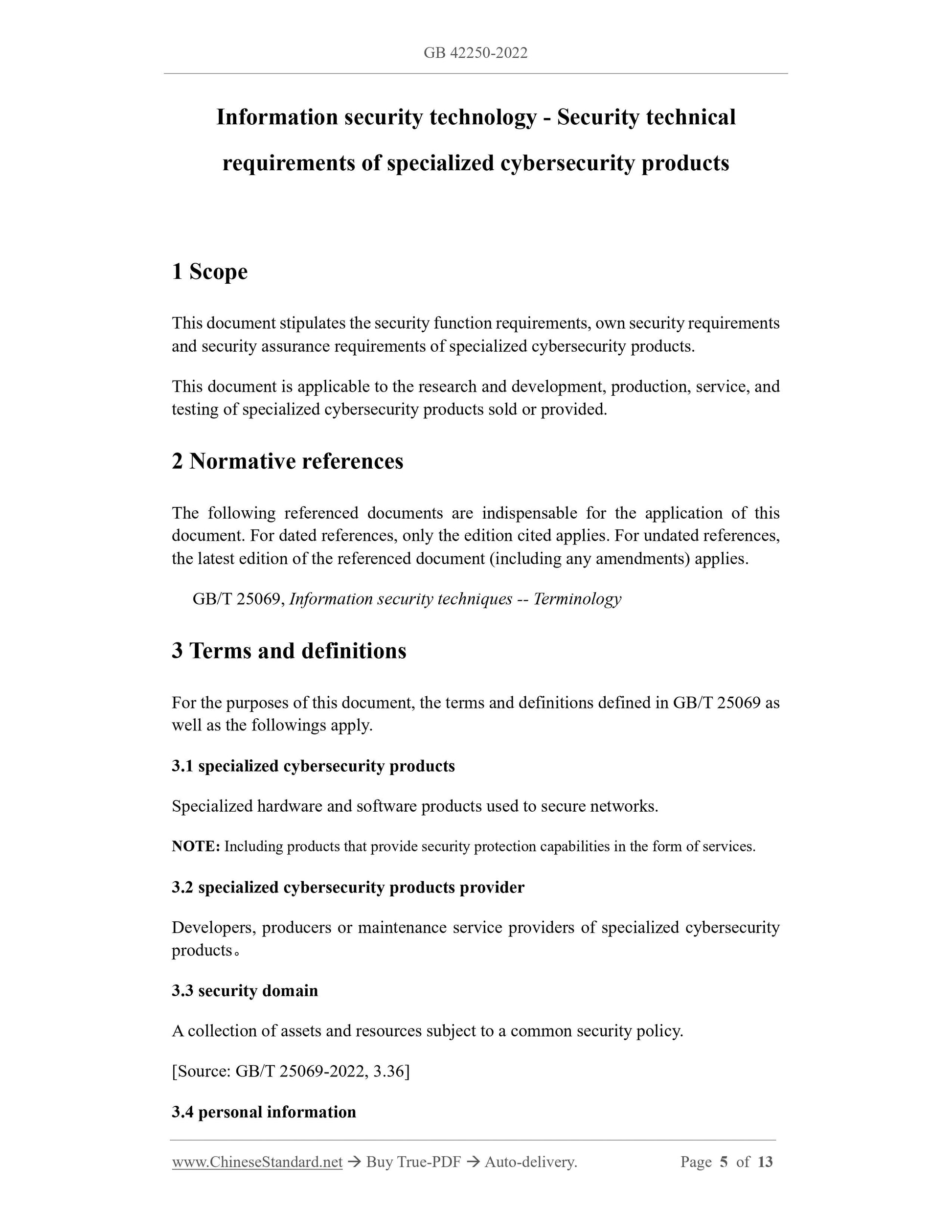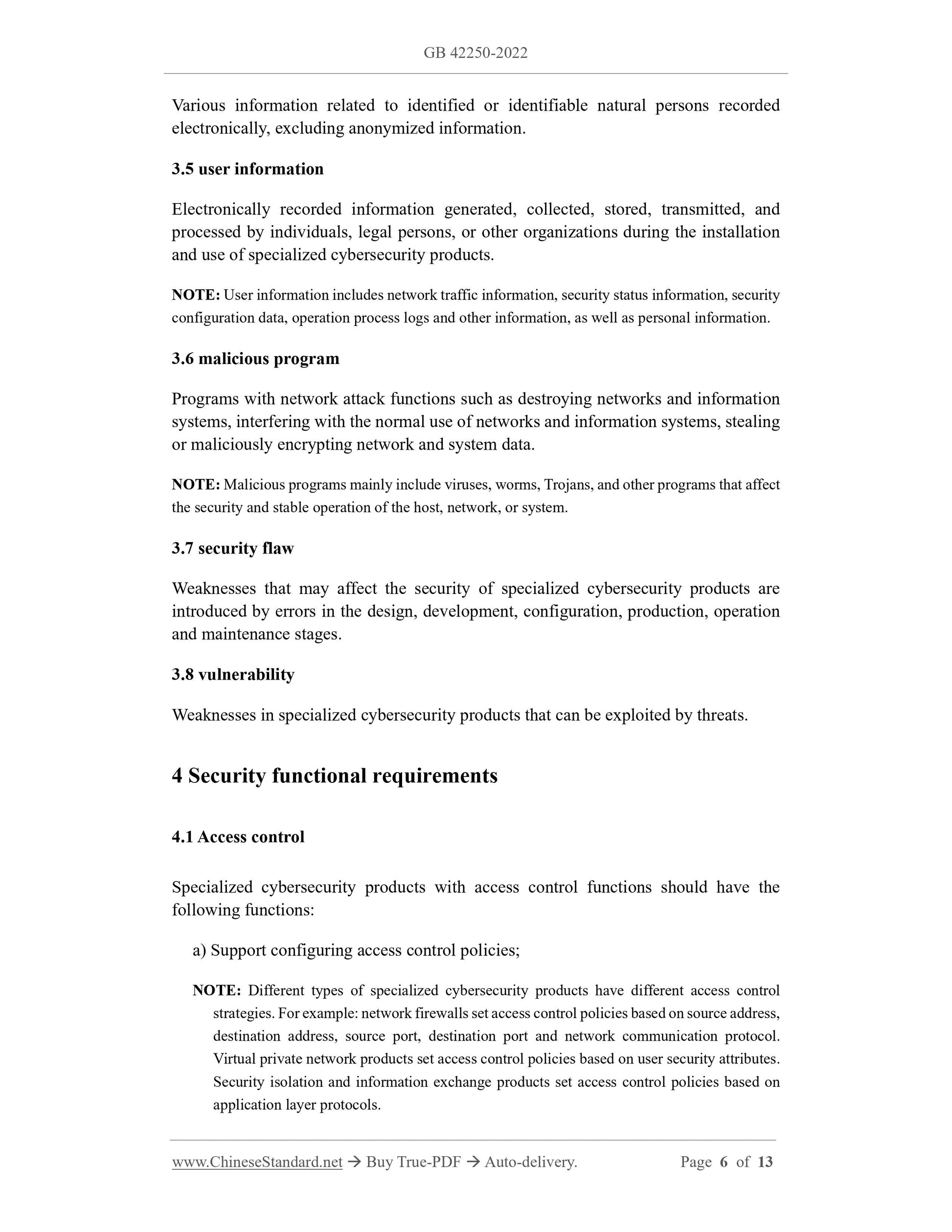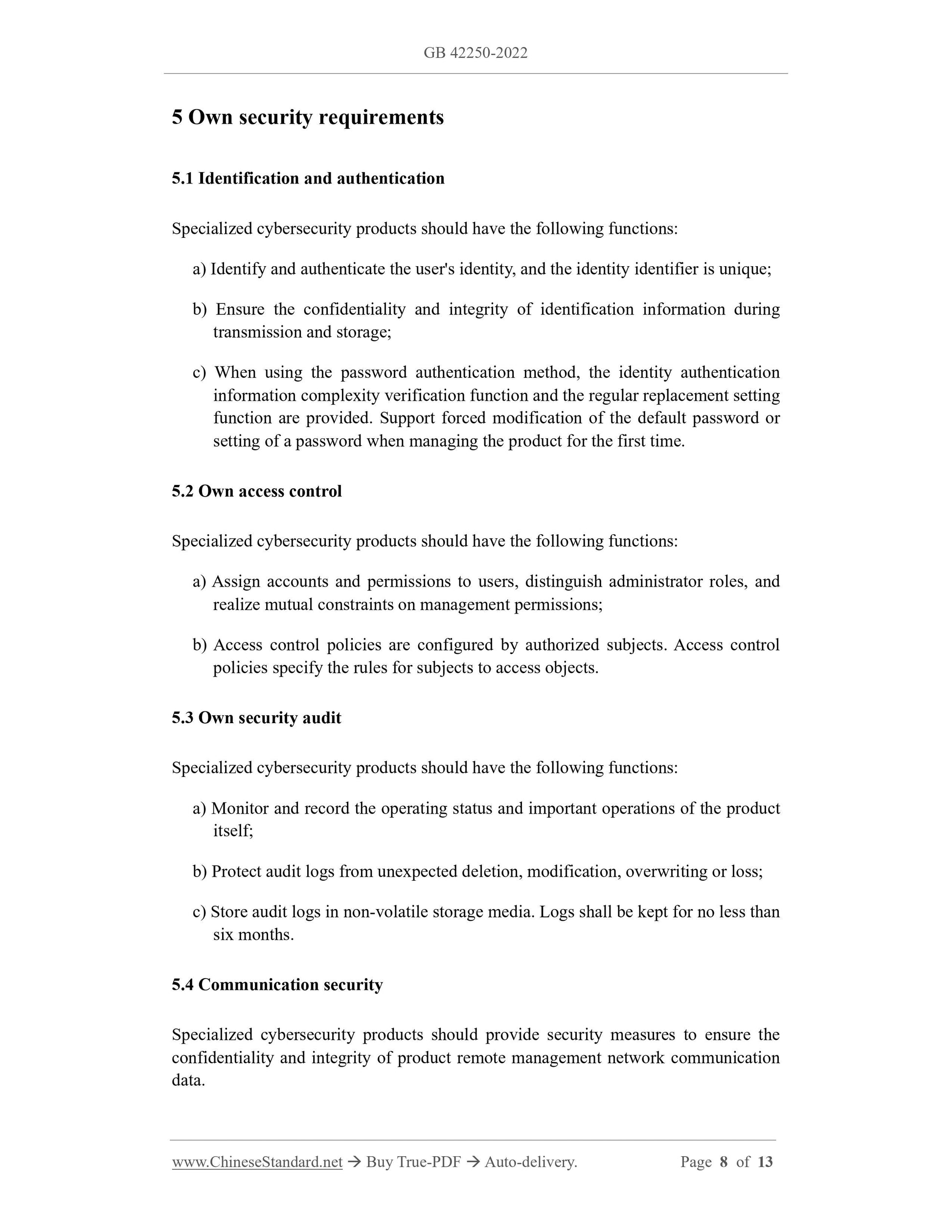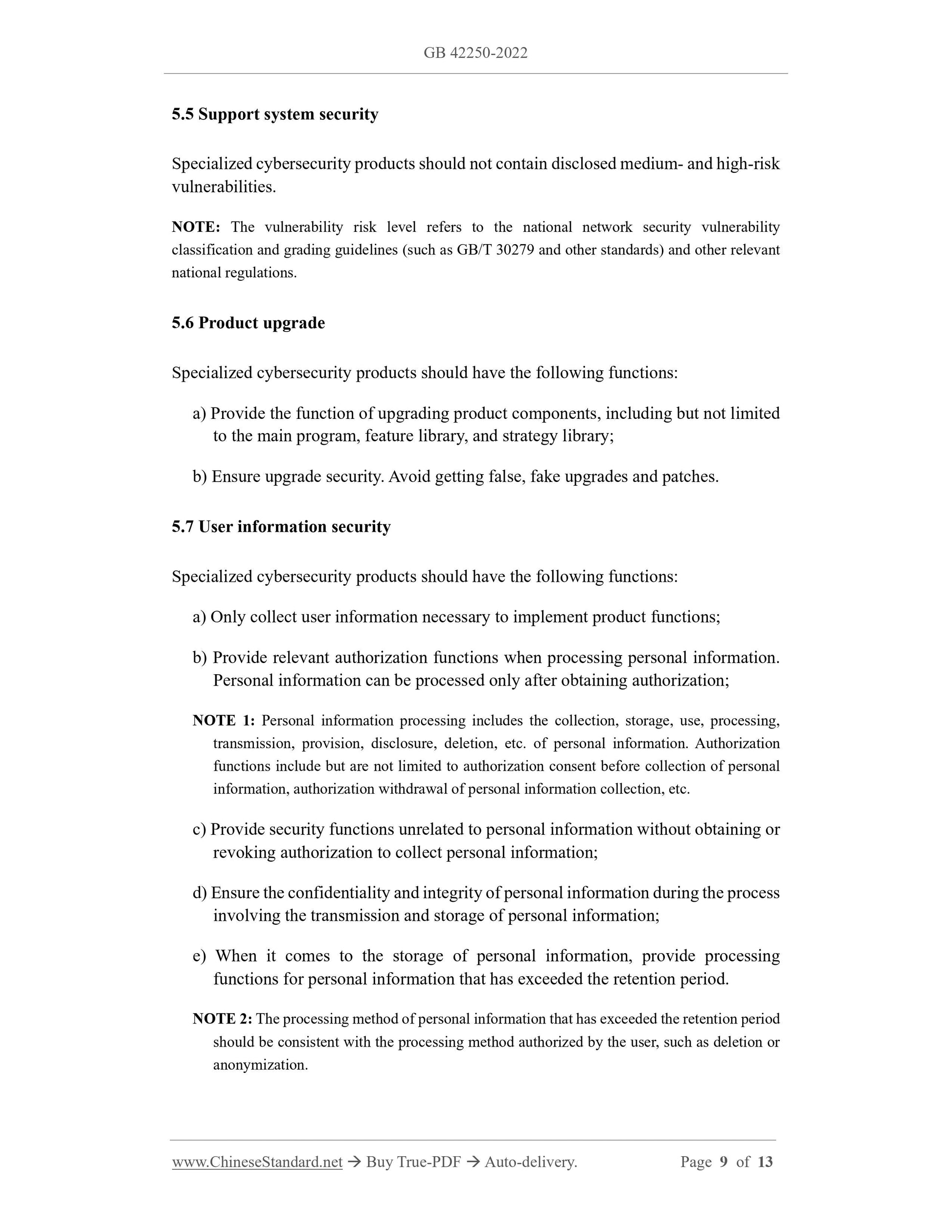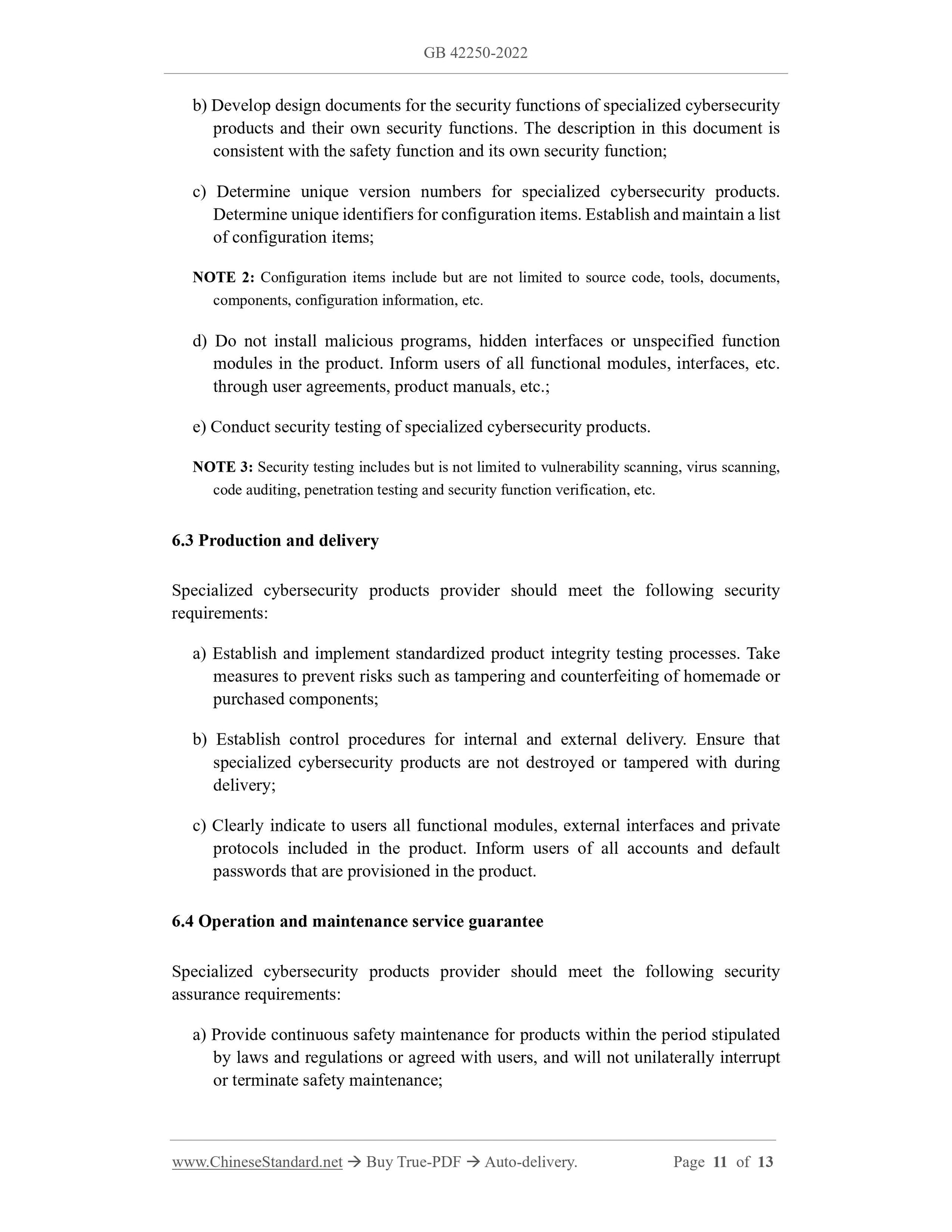1
/
of
7
www.ChineseStandard.us -- Field Test Asia Pte. Ltd.
GB 42250-2022 English PDF
GB 42250-2022 English PDF
Regular price
$170.00
Regular price
Sale price
$170.00
Unit price
/
per
Shipping calculated at checkout.
Couldn't load pickup availability
GB 42250-2022: Information security technology - Security technical requirements of specialized cybersecurity products
Delivery: 9 seconds. Download (and Email) true-PDF + Invoice.Get Quotation: Click GB 42250-2022 (Self-service in 1-minute)
Newer / historical versions: GB 42250-2022
Preview True-PDF
Scope
This document stipulates the security function requirements, own security requirementsand security assurance requirements of specialized cybersecurity products.
This document is applicable to the research and development, production, service, and
testing of specialized cybersecurity products sold or provided.
Basic Data
| Standard ID | GB 42250-2022 (GB42250-2022) |
| Description (Translated English) | Information security technology - Security technical requirements of specialized cybersecurity products |
| Sector / Industry | National Standard |
| Classification of Chinese Standard | L80 |
| Classification of International Standard | 35.040 |
| Word Count Estimation | 10,191 |
| Date of Issue | 2022-12-29 |
| Date of Implementation | 2023-07-01 |
| Issuing agency(ies) | State Administration for Market Regulation, China National Standardization Administration |
Share
